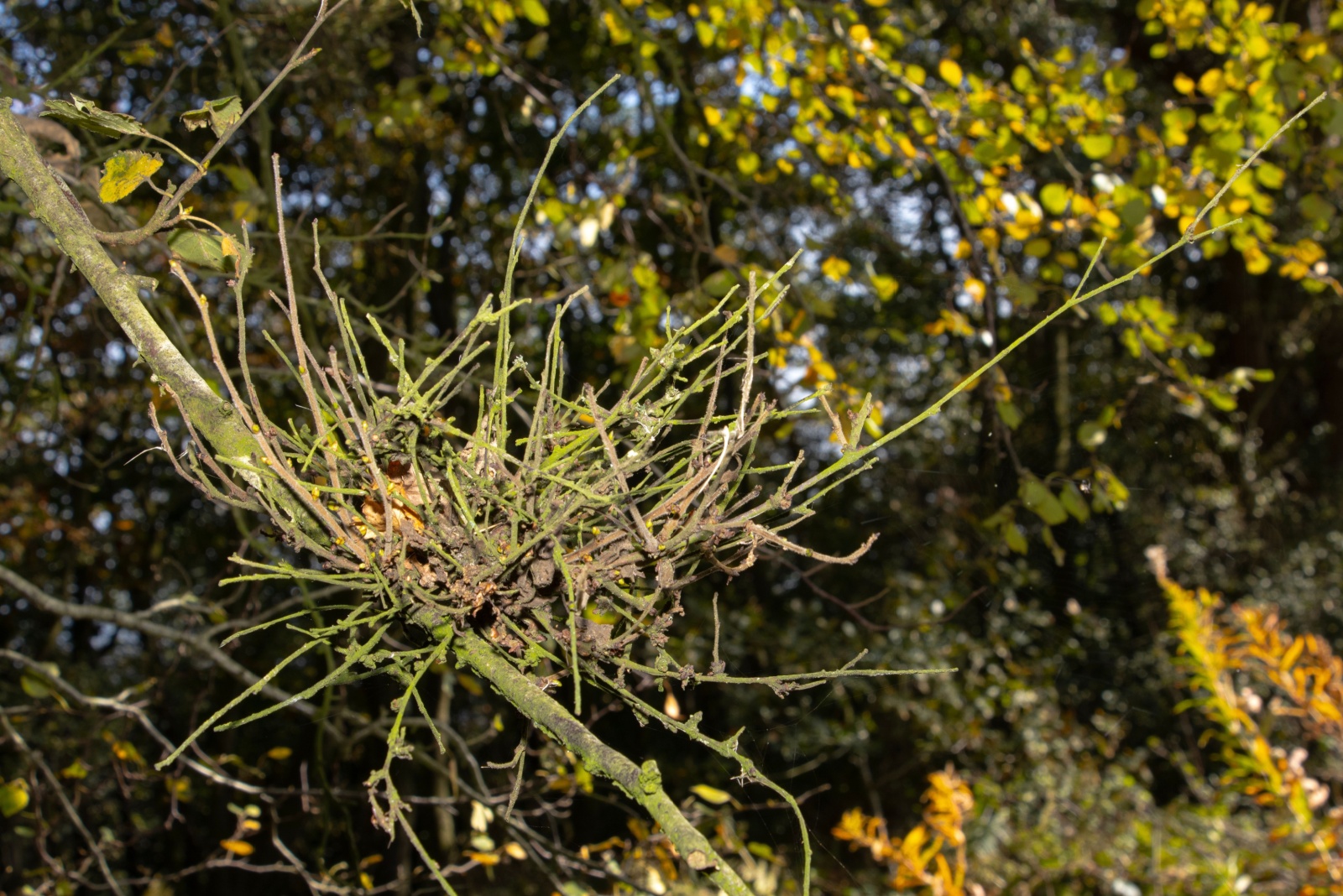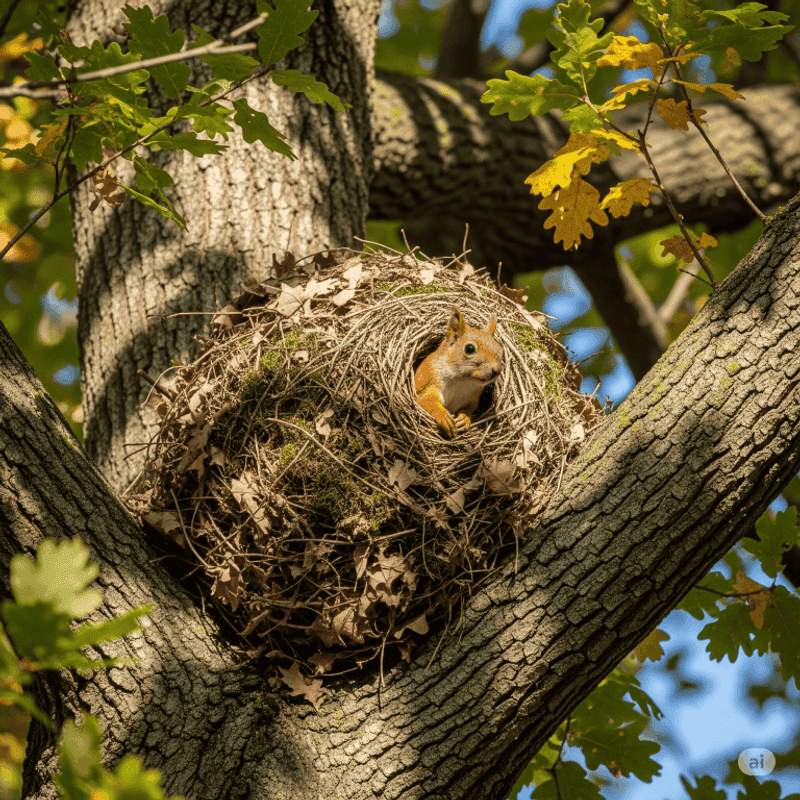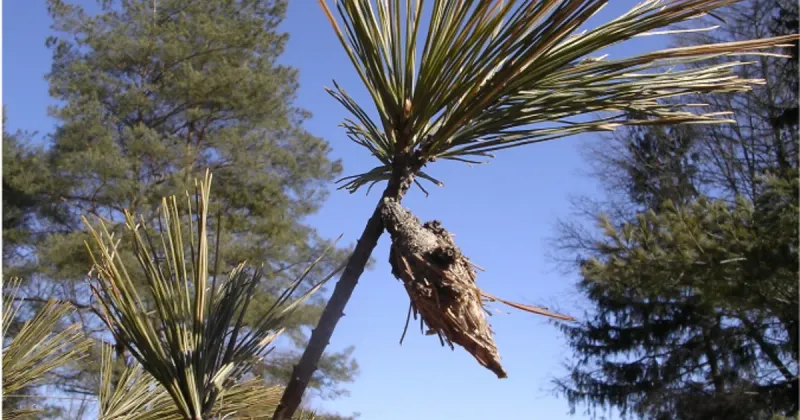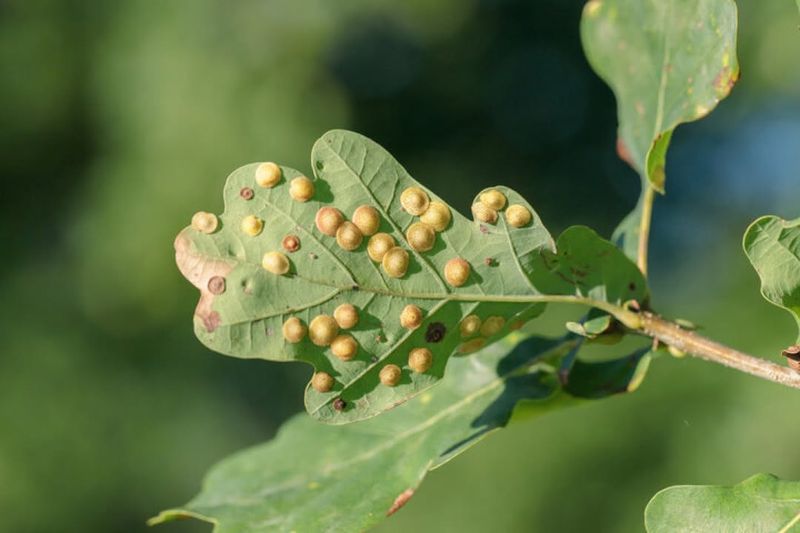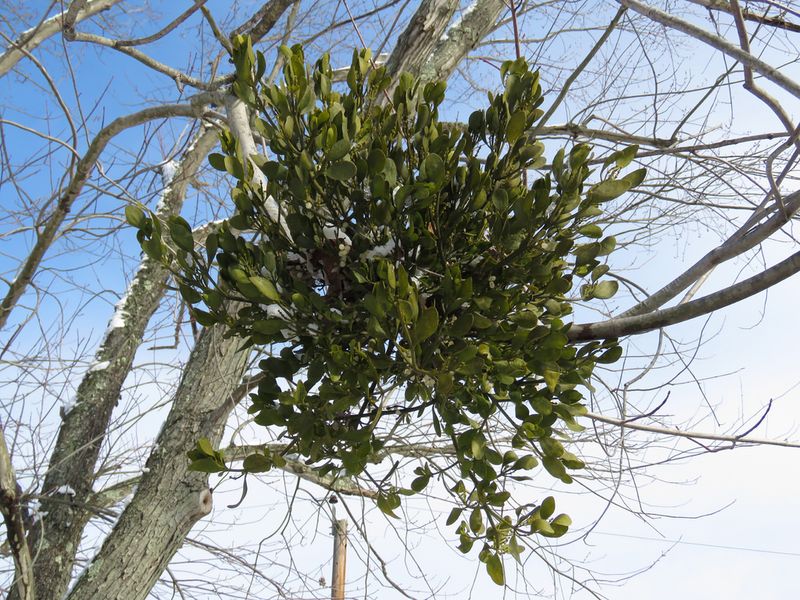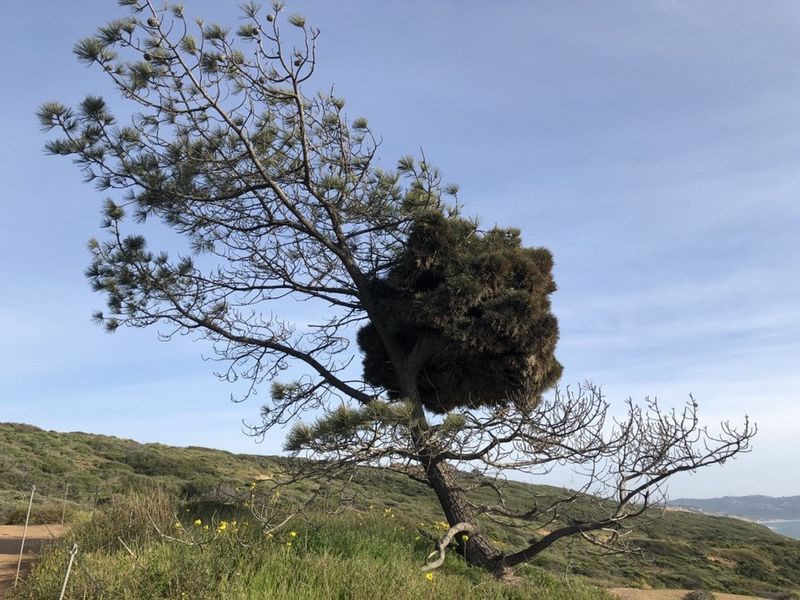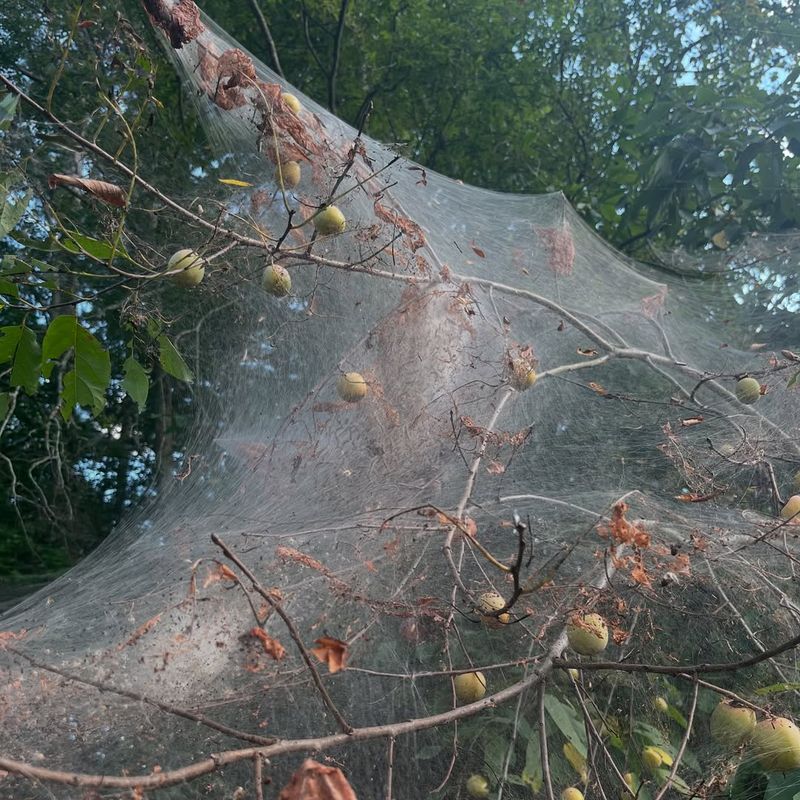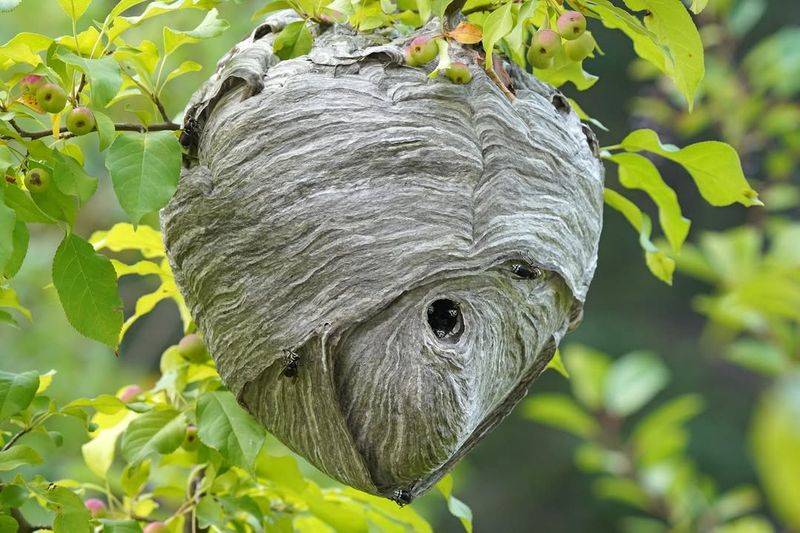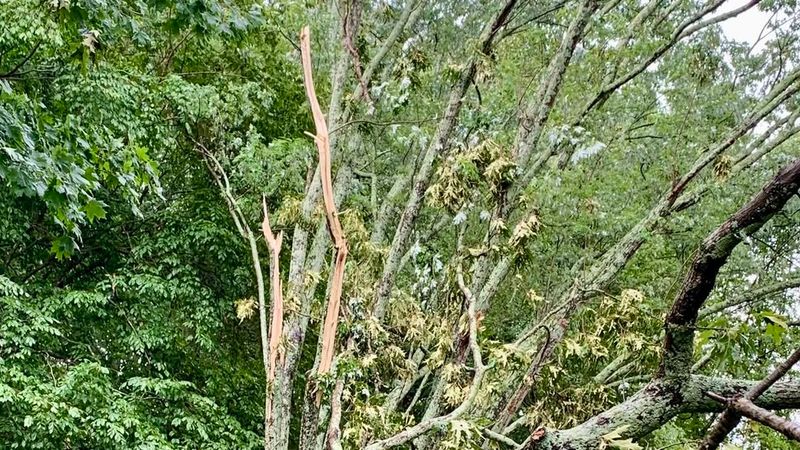Ever spotted something that looks like a bird’s nest high up in your South Carolina tree? Before you grab your binoculars, you might want to take a closer look.
That clump of twigs and leaves could actually be something completely different, and understanding what it is can help you protect your trees and property.
1. Squirrel Dreys Are Common Sights
Squirrels build leafy homes called dreys that often get mistaken for bird nests. Unlike bird nests made from small twigs, dreys use leaves, bark, and moss woven into basketball-sized spheres. You’ll usually find them wedged between branches or tucked into tree forks.
Gray squirrels are especially active nest-builders in South Carolina. They create multiple dreys throughout the year for sleeping and raising babies. Watch for squirrel activity around the structure to confirm your suspicions.
2. Bagworms Create Cone-Shaped Bags
Bagworms are sneaky caterpillars that build protective cases from silk and plant materials. Their homes look like small pinecones or bags hanging from branches, typically measuring one to two inches long. Don’t let their small size fool you, though.
These pests can seriously damage evergreen trees like junipers and arborvitae. The bags contain hungry larvae that munch on needles and leaves. Remove them by hand during winter before they hatch in spring and spread throughout your yard.
3. Galls Form Strange Growths
Tree galls are bizarre growths caused by insects, mites, or fungi that manipulate plant tissue. They appear as round balls, spiky clusters, or weird bumps that definitely catch your eye. Oak trees in South Carolina frequently develop apple-sized galls from tiny wasps.
Most galls won’t kill healthy trees, but they look alarming. The organisms inside trigger abnormal growth, creating protective homes for themselves. Pruning affected branches helps, though many galls are harmless and eventually fall off naturally.
4. Mistletoe Clumps Grow As Parasites
Mistletoe might be romantic during holidays, but it’s actually a parasitic plant stealing nutrients from your trees. Dense green clumps appear throughout the canopy, looking deceptively nest-like from below. Birds spread the sticky seeds, which then sprout and attach to branches.
This parasite weakens trees over time by robbing water and minerals. Heavily infested trees become stressed and vulnerable to disease. Prune infected branches during winter when the green clumps are most visible against bare trees.
5. Witches’ Broom Causes Dense Clusters
Witches’ broom is a strange phenomenon where branches grow abnormally dense and tangled, creating nest-like masses. Fungi, viruses, or mites trigger this bizarre growth pattern that looks supernatural. The clusters can range from softball-sized to several feet across.
Hackberry trees in South Carolina commonly develop these formations. While they rarely kill mature trees, they do look concerning. The abnormal growth diverts energy from healthy branches. Pruning several inches below the affected area helps maintain tree health and appearance.
6. Webworms Spin Silky Tents
Fall webworms create silky white tents at branch tips that expand as caterpillars grow. These web structures appear in late summer and fall, housing dozens of hungry larvae. Unlike bagworms, webworms work as a community, spinning protective shelters around leaves they’re devouring.
Pecan and persimmon trees are favorite targets in South Carolina. The webs look unsightly but rarely cause permanent damage to healthy trees. Remove tents early in the morning when caterpillars are inside, or let natural predators handle them.
7. Hornet Nests Look Papery And Gray
Bald-faced hornets construct impressive paper nests from chewed wood fibers mixed with saliva. These gray, football-shaped structures can grow as large as basketballs by summer’s end. You’ll typically spot them hanging from sturdy branches in the upper canopy.
Unlike harmless bird nests, hornet nests contain aggressive defenders ready to protect their colony. Never attempt removal yourself, as disturbing the nest triggers mass attacks. Call professional pest control services, especially if the nest is near your home or high-traffic areas.
8. Leaf Clusters From Storm Damage
Sometimes what looks like a nest is simply storm debris wedged in branches. Strong winds break off leafy twigs that get caught in tree forks, creating nest-like accumulations. Hurricanes and summer thunderstorms frequently leave these false nests behind in South Carolina trees.
Dead leaves, Spanish moss, and broken branches pile up randomly, lacking the intentional construction of real nests. Check if the material looks fresh or decaying. These clusters usually fall apart during the next storm or can be safely removed with a long pole.

